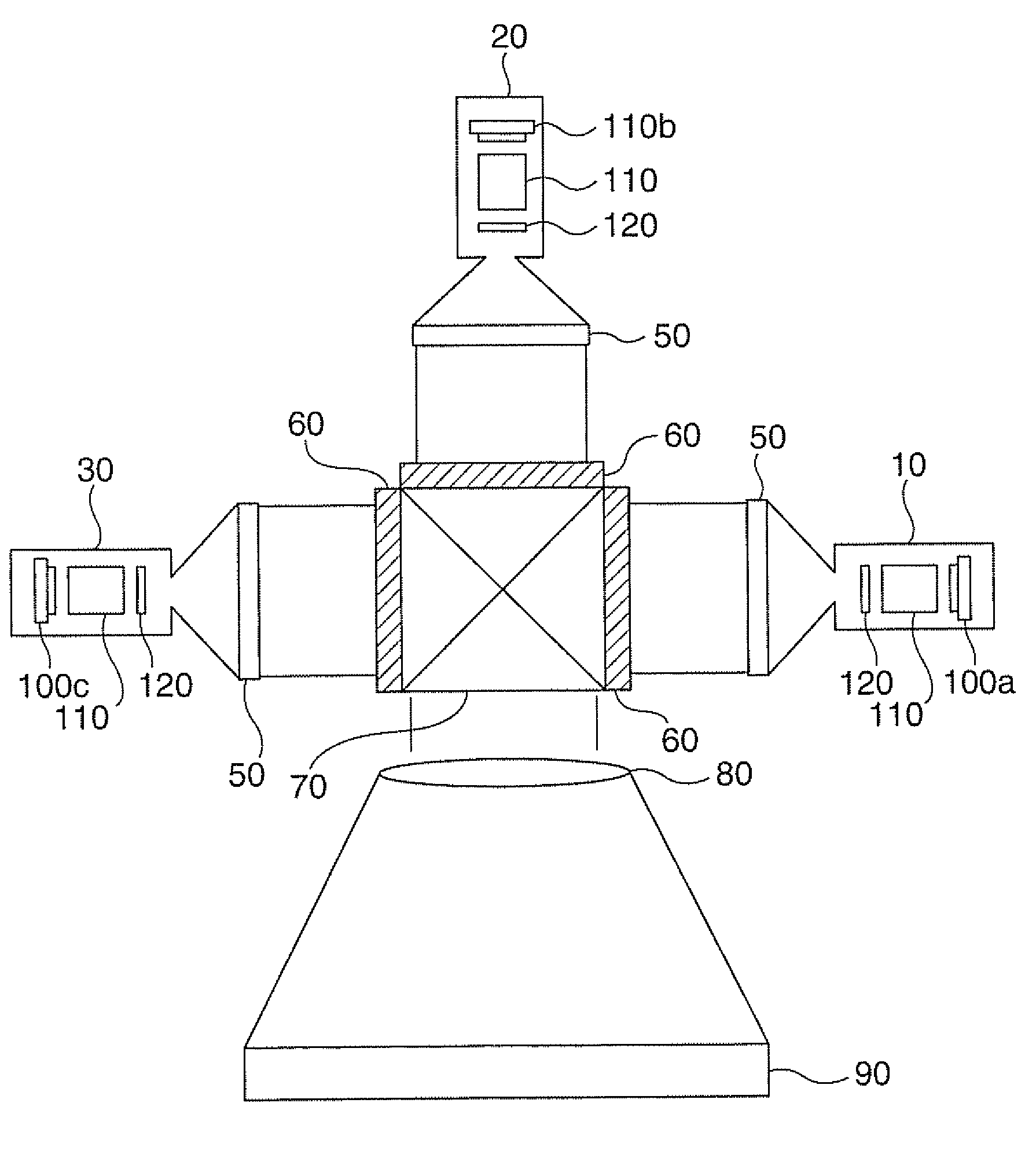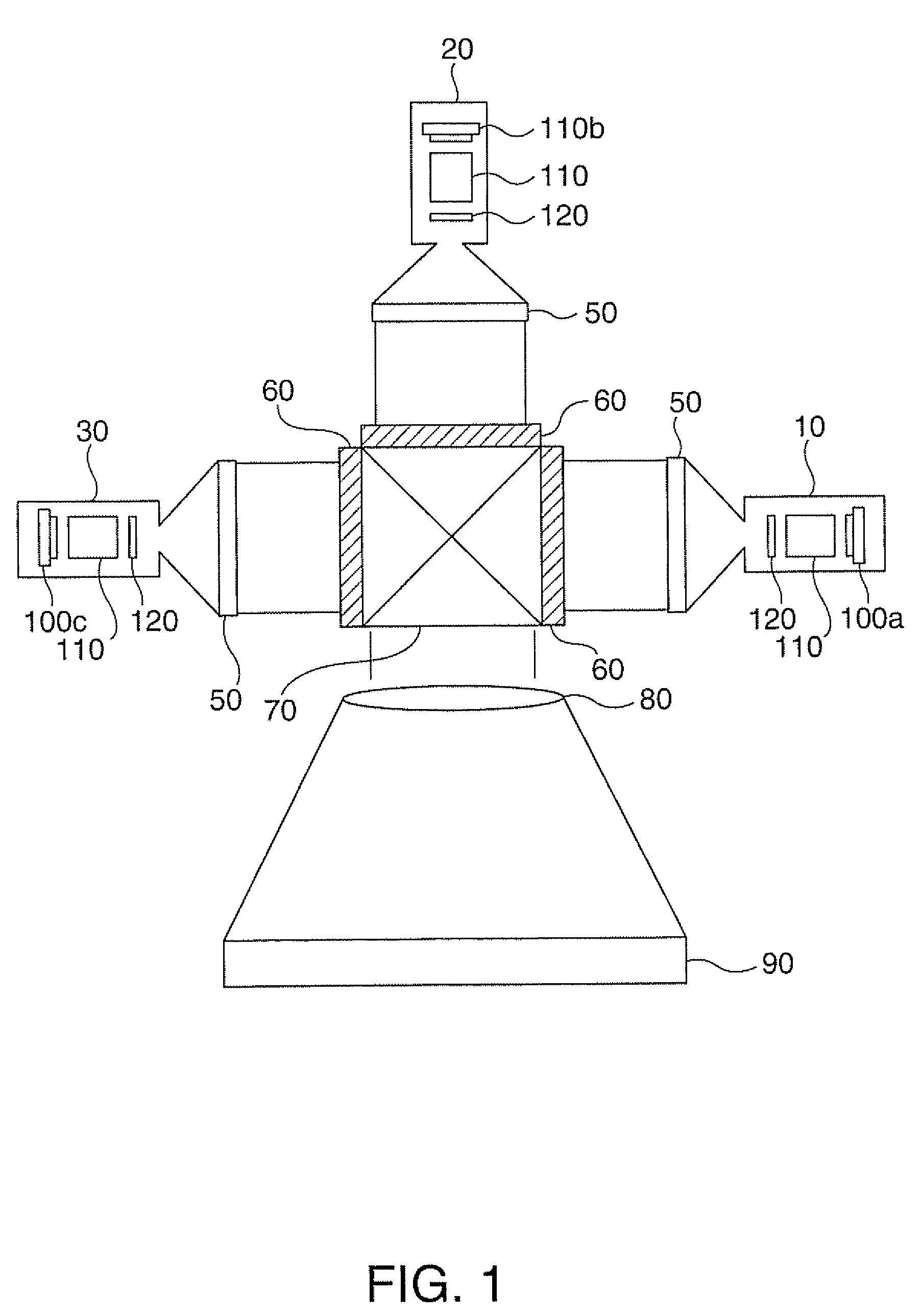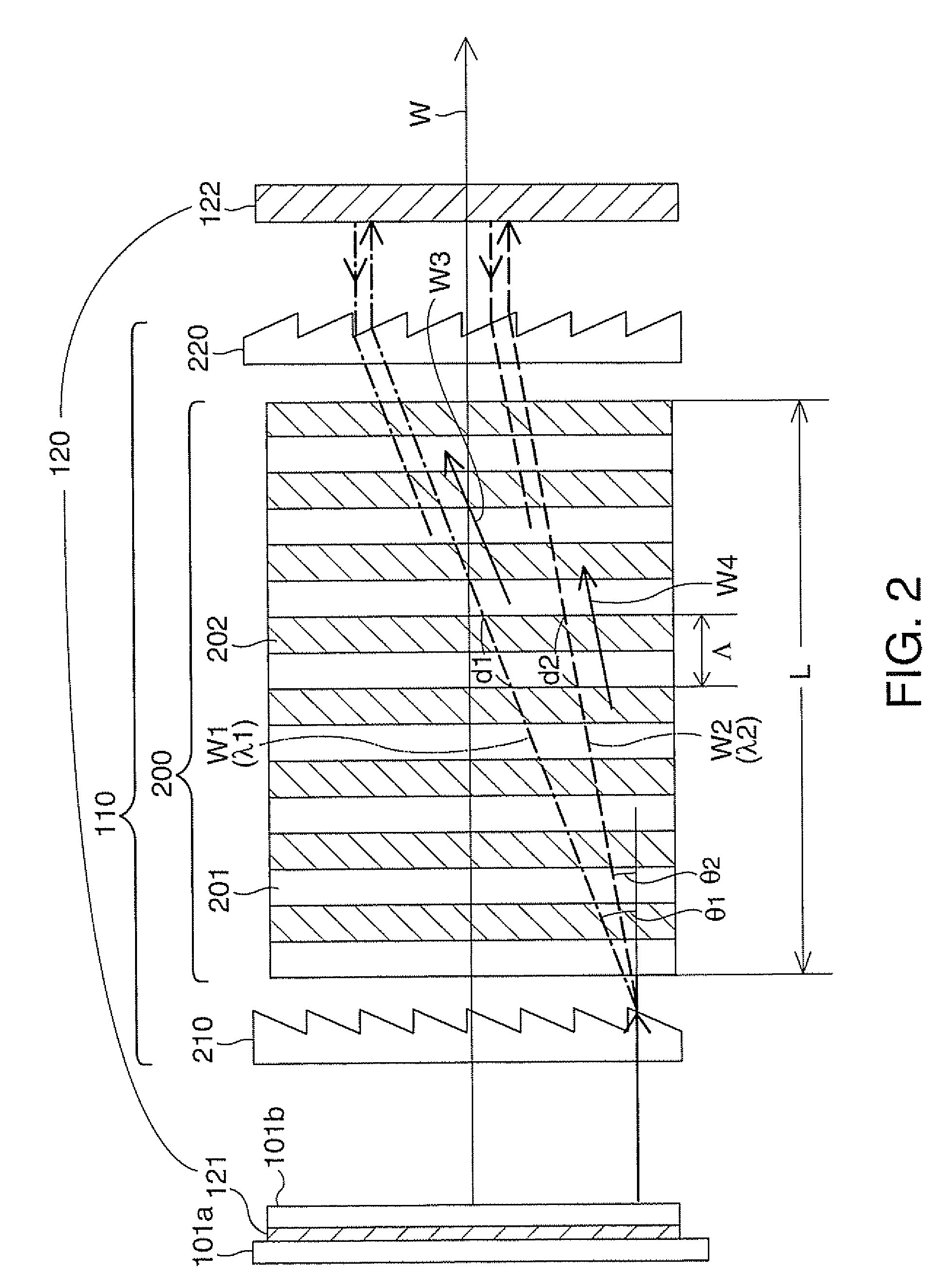Wavelength conversion element, light source device, image display device, and monitor device
a technology of wavelength conversion and light source, applied in static indicating devices, instruments, lighting and heating apparatus, etc., can solve the problems of reducing wavelength conversion efficiency, difficult to always match the phase of fundamental waves, and difficult to achieve stable laser beam emission of output power. achieve the effect of stable output power
- Summary
- Abstract
- Description
- Claims
- Application Information
AI Technical Summary
Benefits of technology
Problems solved by technology
Method used
Image
Examples
first embodiment
A. FIRST EMBODIMENT
A1. System Configuration
[0052]A projector as an image display device according to a first embodiment of the invention will be explained with reference to FIG. 1. FIG. 1 is an explanatory diagram for exemplifying a schematic configuration of the projector according to the first embodiment.
[0053]As shown in FIG. 1, the projector I 000 is provided with light source devices 10, 20, and 30, equalizing optical elements 50, light valves 60, a cross prism 70, and a projection lens 80.
[0054]The light source devices 10 through 30 are used as the light source of the projector 1000. The light source device 10 outputs a red laser beam with a wavelength of about 650 nm, the light source device 20 outputs a green laser beam with a wavelength of about 540 nm, and the light source device 30 outputs a blue laser beam with a wavelength of about 430 nm. It should be noted that since the laser beam is absorbed by various instruments, the intensity of the light beam output form the sem...
second embodiment
B. SECOND EMBODIMENT
[0086]In the second embodiment, the wavelength conversion element having the diffraction surface provided with the blaze of the transmissive grating disposed facing the second harmonic wave generating element is explained with reference to FIGS. 5 and 6.
B1. Configuration of Wavelength Conversion Element
[0087]FIG. 5 is a schematic diagram for explaining a wavelength conversion element according to the second embodiment. FIG. 6 is a schematic diagram for explaining a structure of the wavelength conversion element according to the second embodiment. The wavelength conversion element 111 of the second embodiment is provided with transmissive gratings 230, 240, and a second harmonic wave generating element 200a. The second harmonic wave generating element 200a has the polarization regions 201 and the polarization inversion regions 202 having polarization directions different from each other.
[0088]As shown in FIG. 6, the transmissive grating 230 is provided with a plur...
third embodiment
C. THIRD EMBODIMENT
[0095]In the third embodiment, the wavelength conversion element is configured using transmissive gratings having a rectangular groove cross-section.
C1. Configuration of Wavelength Conversion Element
[0096]FIG. 7 is a schematic diagram for explaining the wavelength conversion element according to the third embodiment. The wavelength conversion element 112 of the third embodiment is provided with transmissive gratings 250 and the second harmonic wave generating element 200. The second harmonic wave generating element 200 is the same as the second harmonic wave generating element explained in the first embodiment, and consequently, the explanations therefor will be omitted.
[0097]As shown in FIG. 7, the transmissive grating 250 is provided with a plurality of grooves 253 formed on a first surface 251 facing the second harmonic wave generating element 200 at substantially even intervals, and a planar shape on a second surface 252 opposite to the first surface 251. As s...
PUM
| Property | Measurement | Unit |
|---|---|---|
| wavelength | aaaaa | aaaaa |
| wavelength | aaaaa | aaaaa |
| wavelength | aaaaa | aaaaa |
Abstract
Description
Claims
Application Information
 Login to View More
Login to View More - R&D
- Intellectual Property
- Life Sciences
- Materials
- Tech Scout
- Unparalleled Data Quality
- Higher Quality Content
- 60% Fewer Hallucinations
Browse by: Latest US Patents, China's latest patents, Technical Efficacy Thesaurus, Application Domain, Technology Topic, Popular Technical Reports.
© 2025 PatSnap. All rights reserved.Legal|Privacy policy|Modern Slavery Act Transparency Statement|Sitemap|About US| Contact US: help@patsnap.com



